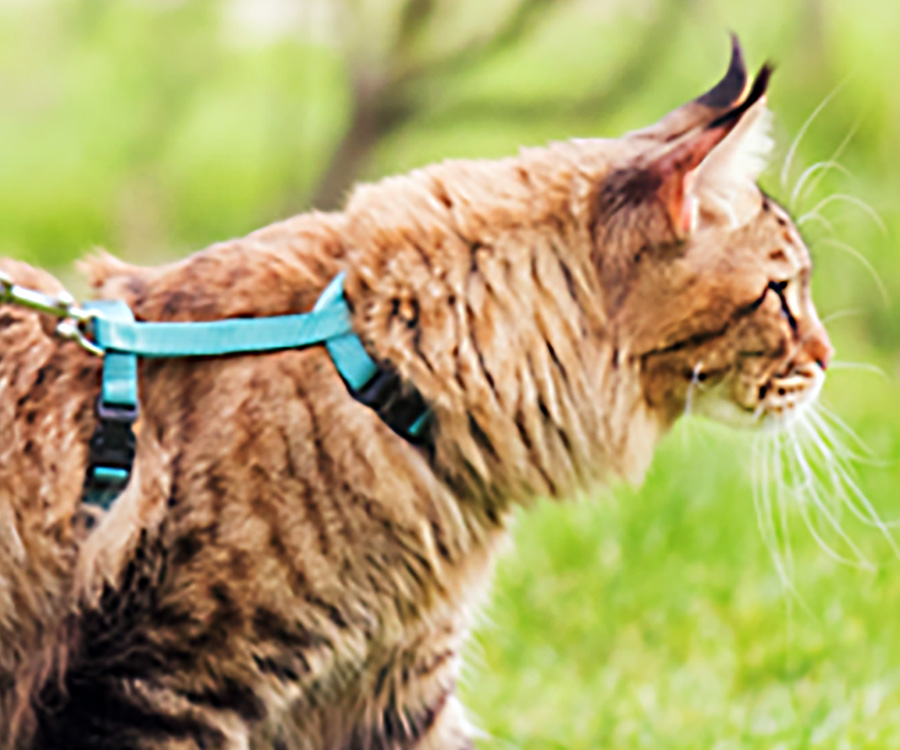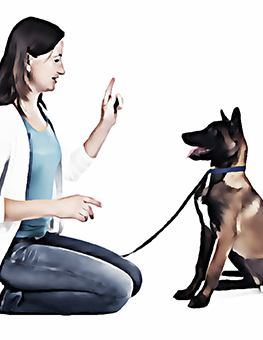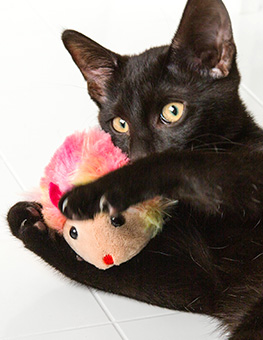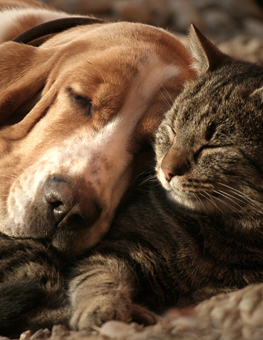Leash Training Your Cat
No matter if your cats are exclusively indoor or outdoor cats there may be times you will want or need to keep them confined with a leash.
Teaching a cat to walk on a leash is almost like training a dog, but a little more complex.

A leash works better with a harness, as cats can easily slip out of collars.
- Get the Right Supplies. Cats need both a harness and a leash. It’s a good idea to measure your cat’s chest before you head to your local pet store to make sure you pick up the right size. Make sure you do not use a collar, as cats can easily slip out of these. Walking jackets work well as an alternative to a harness. Don’t forget to pick up some treats while you’re out! It’s probably a good idea to place the new harness and leash somewhere near your cats sleeping area for a few days to get him/her accustomed to the appearance and smell.
- Allow Your Cat to Become Accustomed to the Fit. The new harness will probably look uncomfortable at first until your cat gets used to it. You can wait until just before mealtime to put the harness on. Then immediately feed and praise your cat. If your cat still looks uncomfortable, try distracting him/her with your favorite toy. When he/she finally looks comfortable, take off the harness. Repeat this process for a few days. You don’t want to stress out your cat with getting used to the harness and walking on the leash the first day.
- Introduce Your Cat to the Leash. Once your cat has become accustomed to the harness, it is okay to begin attaching the leash. Let your cat walk around the house while dragging the leash behind. It’s very important that you keep a close eye on your cat during this time and make sure he/she doesn’t get tangled up around anything. Give continuous praise and treats to your cat for being so good! Take a few days (just like you did with the harness) for your cat to get used to the leash attachment. You can now hold onto the leash as he/she walks around the house, but don’t restrict your cat’s movement or direct him/her anywhere.
- Begin Directing Your Cat. Never tug on the leash. It takes patience while you wait for your cat to get used to leashing. Continue using treats to direct your cat forward and point him/her in the direction you would like to go. If your cat tugs at you, just stop until he/she becomes relaxed and try again.
- Get Accustomed to Sights, Smells, and Sounds. Cats typically get nervous around dogs, cars, sirens, and other people. Gradually ease your feline friend into new sounds and smells by first taking a stroll around your yard.
Patience is a virtue when teaching your cats to walk on a leash. Never do anything your cat refuses to do and don’t let it become a battle because you will most likely lose this one. Always keep a strong hold on the leash and avoid leaving your cat leashed alone outdoors. It will take time to train your cat, but we think it’s worth the effort!
Do you already go on walks with your kitty? If so, where do you like to go and how hard was it for you to train your cat?













